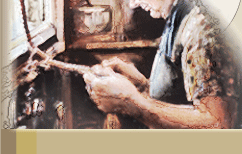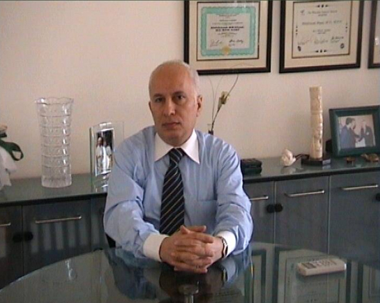|


    
| |
Chief editor
Abdulrazak Abyad MD, MPH, MBA, AGSF, AFCHSE
Editorial office:
Abyad Medical Centre & Middle East Longevity Institute
Azmi Street, Abdo Centre
PO Box 618
Tripoli, Lebanon
Tel: 961 6 443 684
Fax: 961 6 443 685
aabyad@cyberia.net.lb
Publisher
Lesley Pocock
medi+WORLD International
11 Colston Avenue
Sherbrooke, 3789, VIC
Australia
Tel: +61 3 9005 9847
Fax: +61 3 9012 5857
Lesleypocock@mediworld.com.au
|
|
|
While all efforts have been
made to ensure the accuracy of the information in this journal,
opinions expressed are those of the authors and do not necessarily
reflect the views of The Publishers, Editor or the Editorial
Board. The publishers, Editor and Editorial Board cannot be
held responsible for errors or any consequences arising from
the use of information contained in this journal; or the views
and opinions expressed. Publication of any advertisements
does not constitute any endorsement by the Publishers and
Editors of the product advertised.
The contents of this journal
are copyright. Apart from any fair dealing for purposes of
private study, research, criticism or review, as permitted
under the Australian Copyright Act, no part of this program
may be reproduced without the permission of the publisher.
|
|
|

|
| October
2015 , Volume 12 - Issue 3 |
|
Editorial

Editor: A. Abyad
|
|
In this issue
of the journal the papers discuss the demographic trends
in India which are of great interest in addition to
dealing with geriatric care through life.
In the paper on Generation Life
Table for India, 1901-1951. The authors stressed that
the study of mortality in India during the first part
of twentieth century forms a very important and interesting
study. It is very significant to note that India's population
growth in those years (1901-1951) was governed not by
the fluctuations in the birth rate but by the wide variations
in the death rate. The aim of the present study is to
construct sex wise generation life table of India and
to assert the advantage of generation life expectancy
over period life expectancy. Further, the effects of
different birth cohorts on distribution of age at death
for male and female population of India are also examined.
The data used in this study are secondary in nature
and put with fitted arguments. The construction of different
generation life table of India shows the higher value
of generation life expectancy over period life expectancy
and help to recognize that different birth cohorts of
India have different distribution of age at death. This
can be important for policy makers to tackle the health
problems of different cohorts. It is further expected
that the construction of generation life table would
open up newer areas of studying mortality pattern of
a country.
In the second paper A Comparative Study of Life Tables
in an Urban Set-up of
North -East of India, since 1986 to 2011. The authors
stressed that life table gives life expectancies, death
probabilities, the most preferred indicators in demographic
and health analysis that used to measure status of good
health, education and other valued achievements. The
authors aims is to study the trend and differential
of mortality of Guwahati city, Assam for male and female
by means of life table for the period 1986 to 2011.
Materials and Methods: Data in this study has been extracted
from the Office of Birth and Death Registration, Guwahati
Municipal Corporation (GMC) for the years 1986 to 2011
at an interval of five year. Total 24,145 death records
were collected from Office of Birth and Death Registration,
GMC during 1986 to 2011. The results showed significant
changes of life expectancies at different age has found
for both sexes of Guwahati city during 1986-2011. A
declining trend of probabilities of death has been found
since 1986- 2011 irrespective of sex. The authors concluded
that though healthcare policies in Assam are adequate
in addressing the issues of infants, children and mothers,
it is required to address the issues regarding survival
gain in Guwahati.
The last paper discussed the
association of lifelong learning process with geriatric
care i.e. the physical and mental well-being of the
elderly people of India. The study utilized data from
Census of India, National Sample Survey Organization
and Sample registration system for reviewing the relevant
issues like who are the old, what are their problems
and why do they need care or why society should at all
bother for their care? The authors proposes the introduction
of folk games or traditional games for identifying psychological
/ psychiatric disorder of the elderly people. Another
fruitful learning experience may be the learning a new
language in a later age. The post retirement period
may be the fertile ground for hobby and experience sharing.
All these proposed schemes of learning for the aged
people demands an infrastructure. Here comes the responsibility
of the government and society as a whole. The authors
concluded that the study does not demand credit for
any innovative schemes of learning. The present study
only proposes a few new contexts for these processes.
It is sincerely expected that the use of Lifelong Learning
as a medium for the physical and mental upliftment of
this esteemed section of the society would give the
'concept of learning' it's much needed humanistic approach.
- - - - - - - - - - - - - - -
- - - - - - - - - - - - - - - - - - - - - - - - - -
-
|
|
|
|

